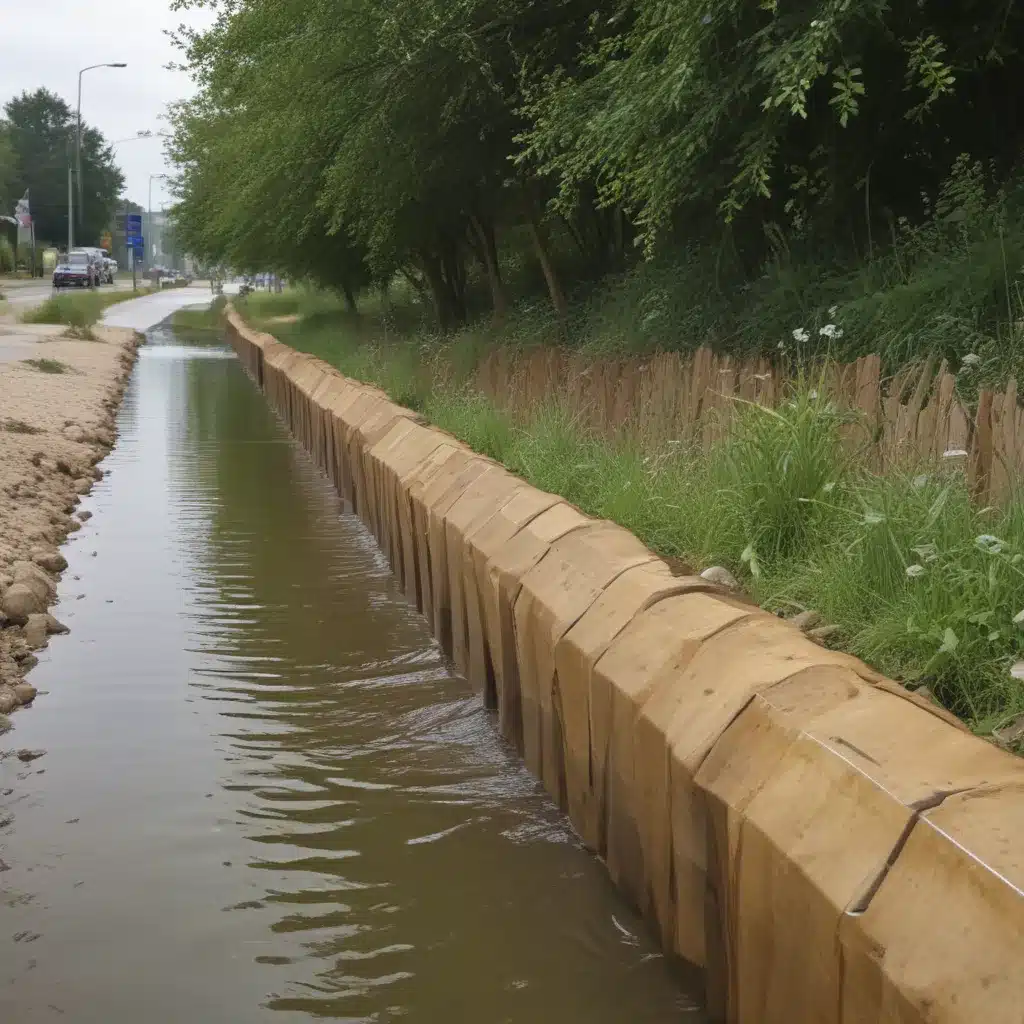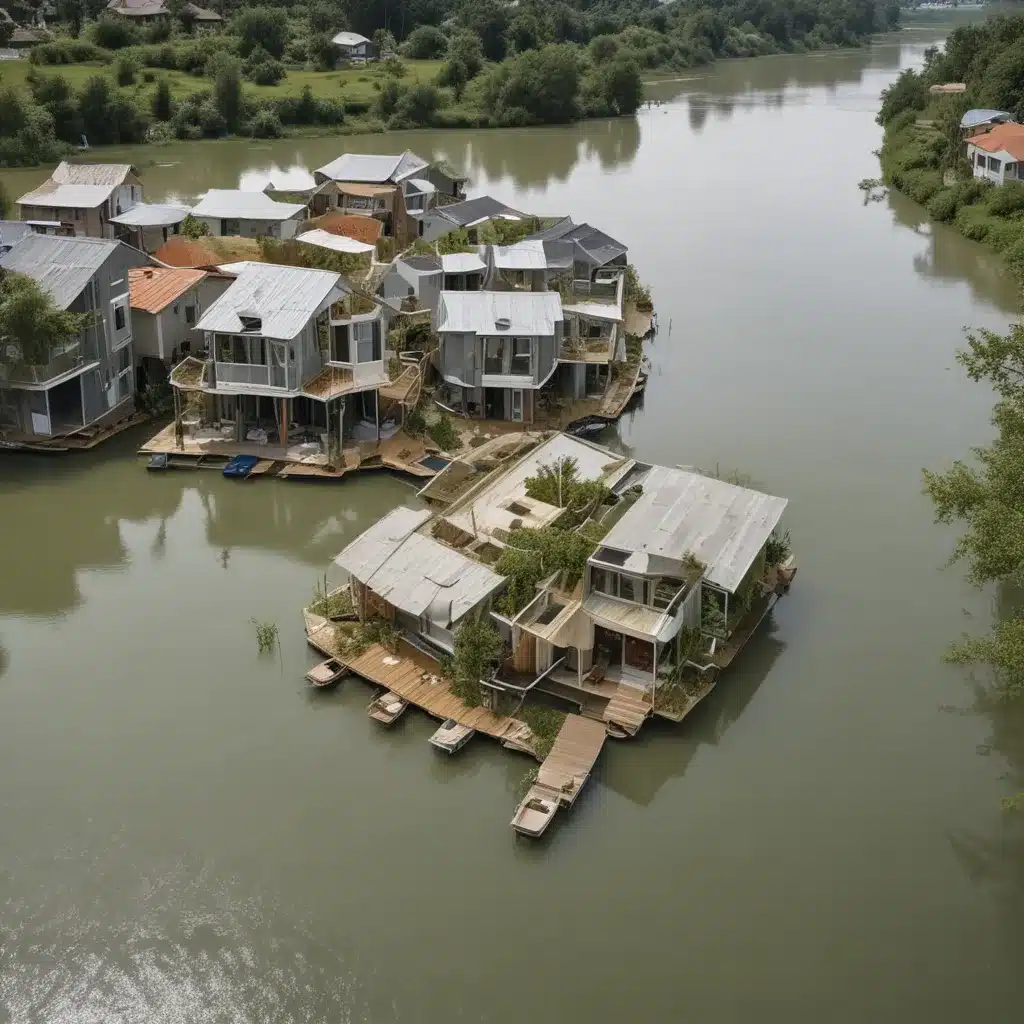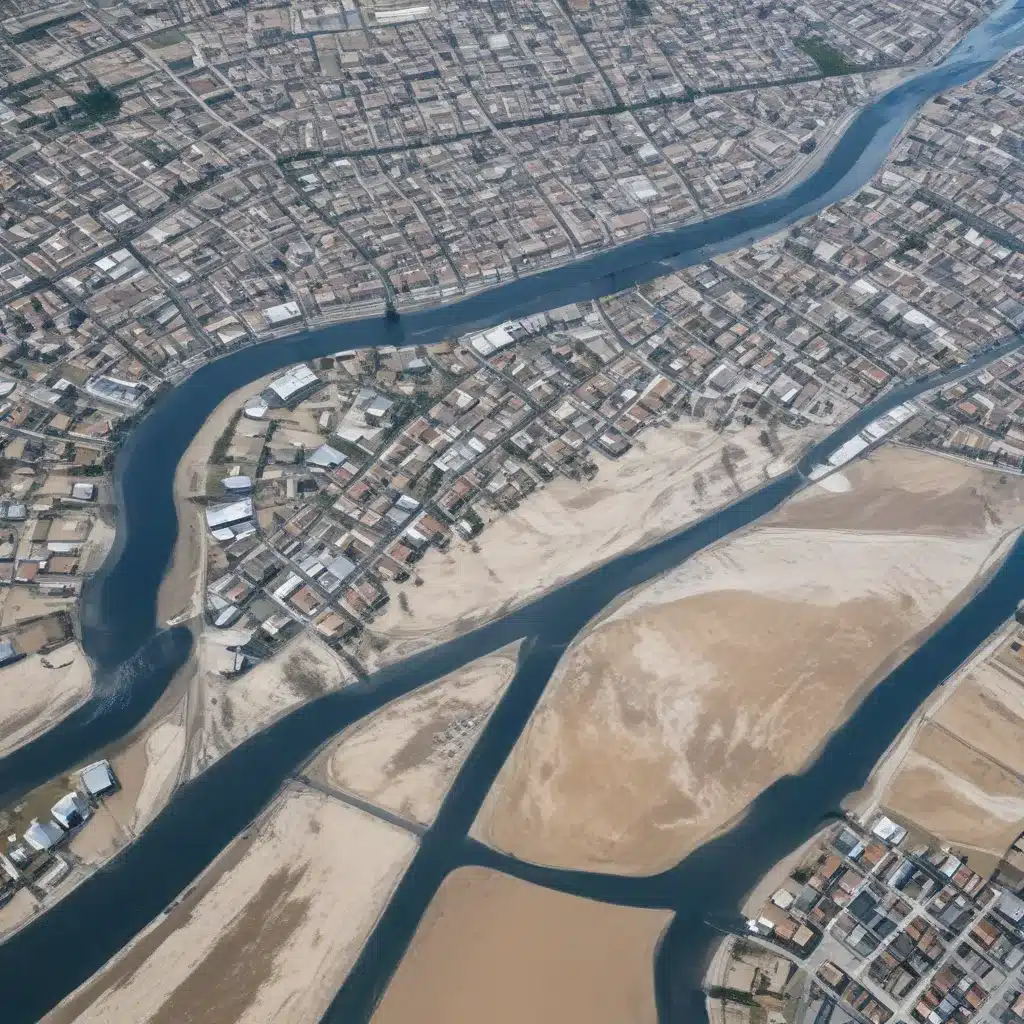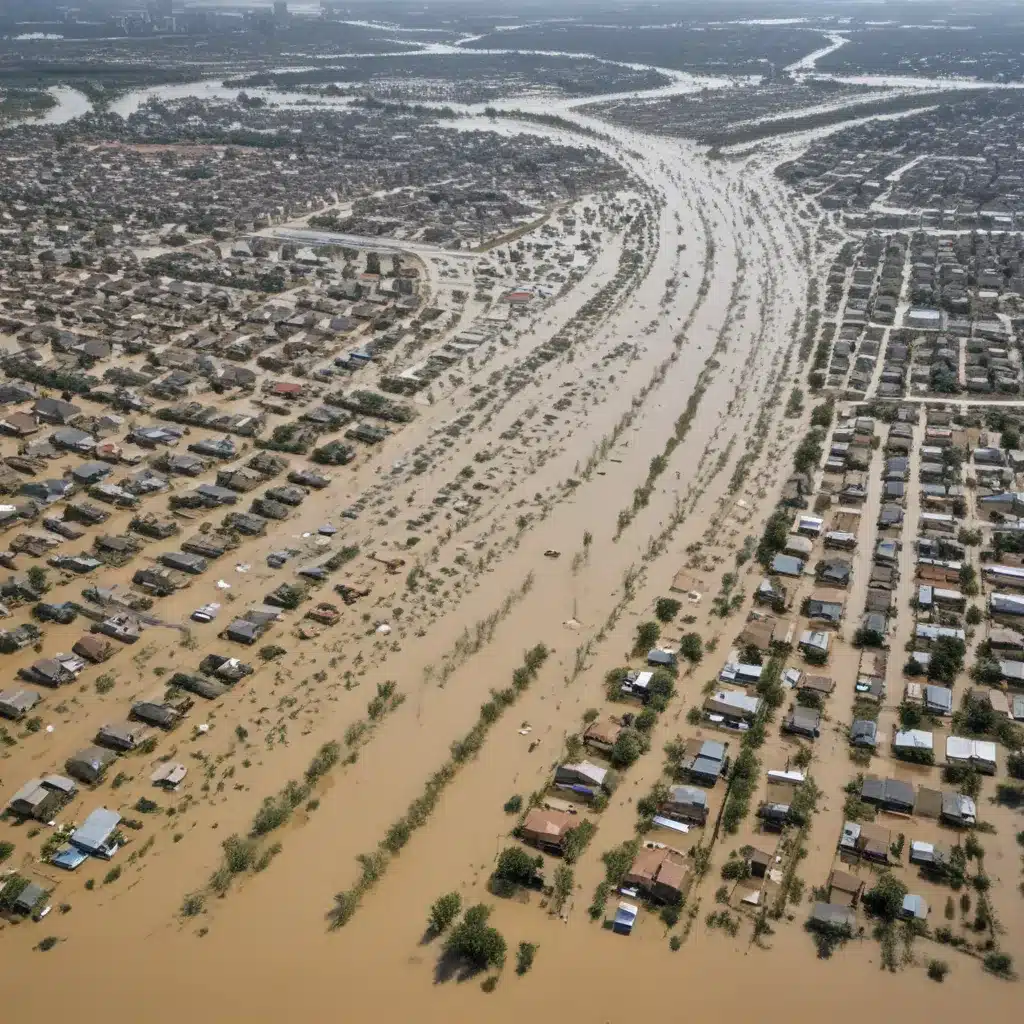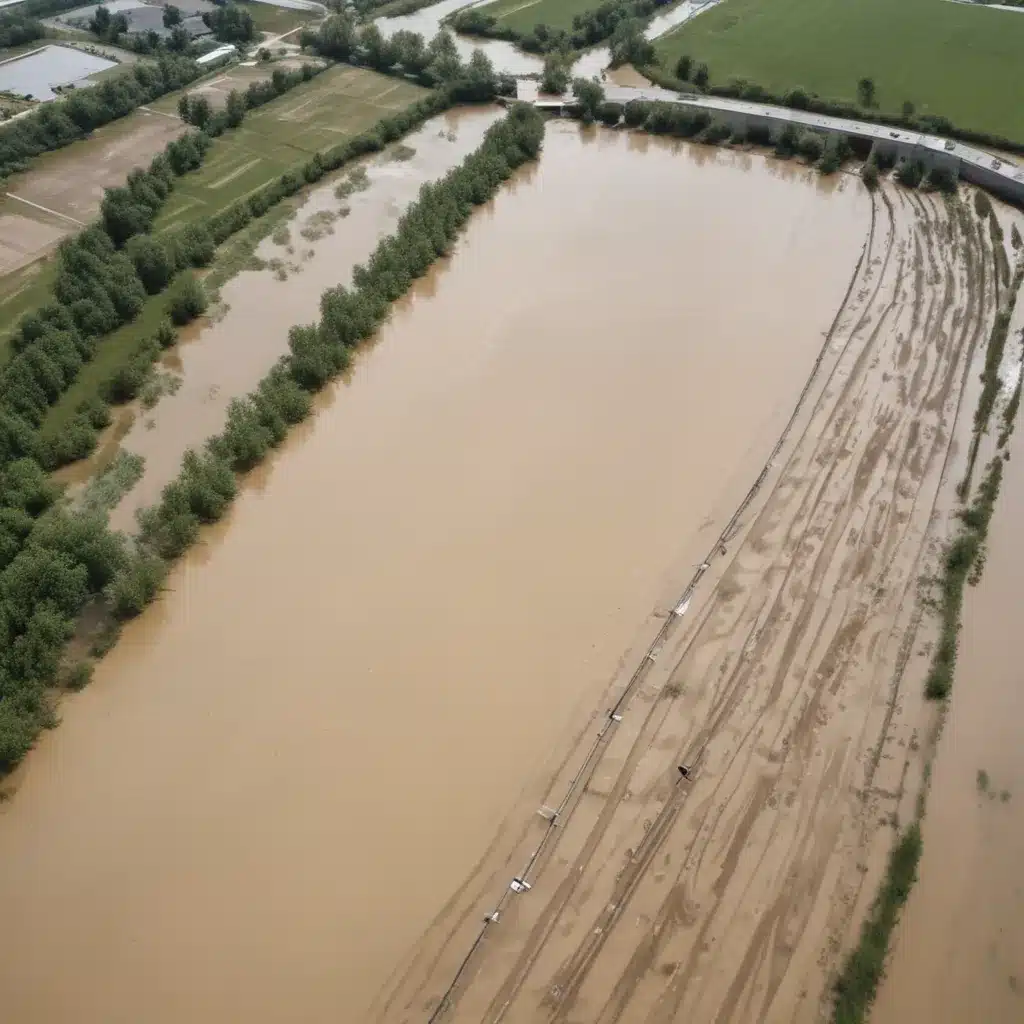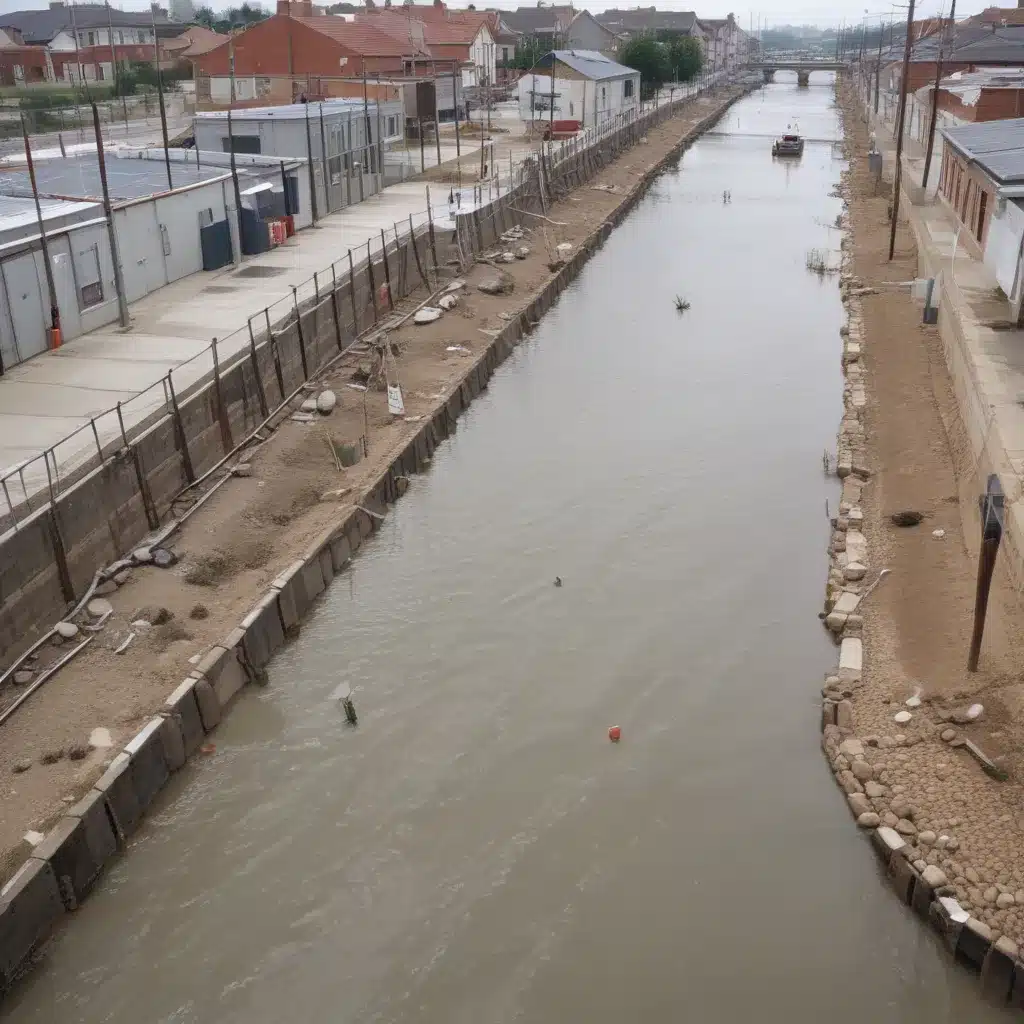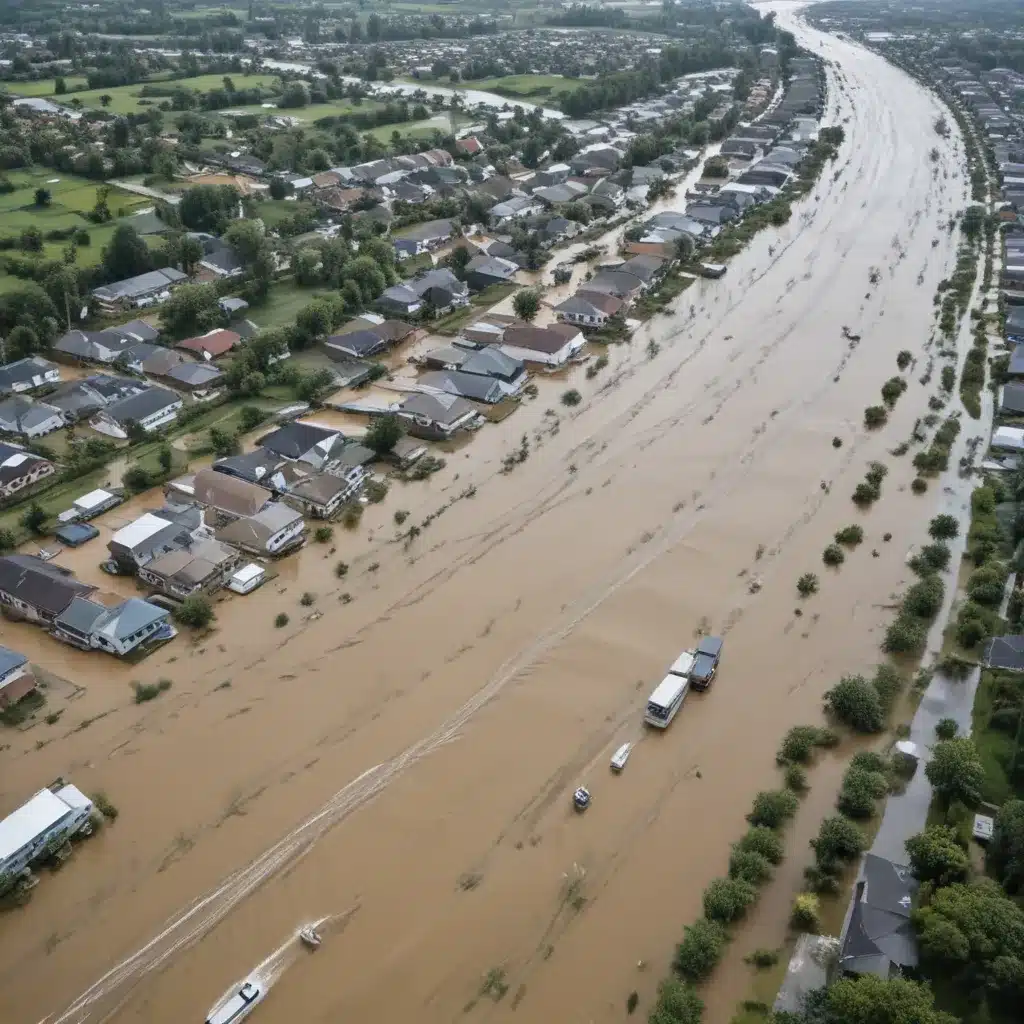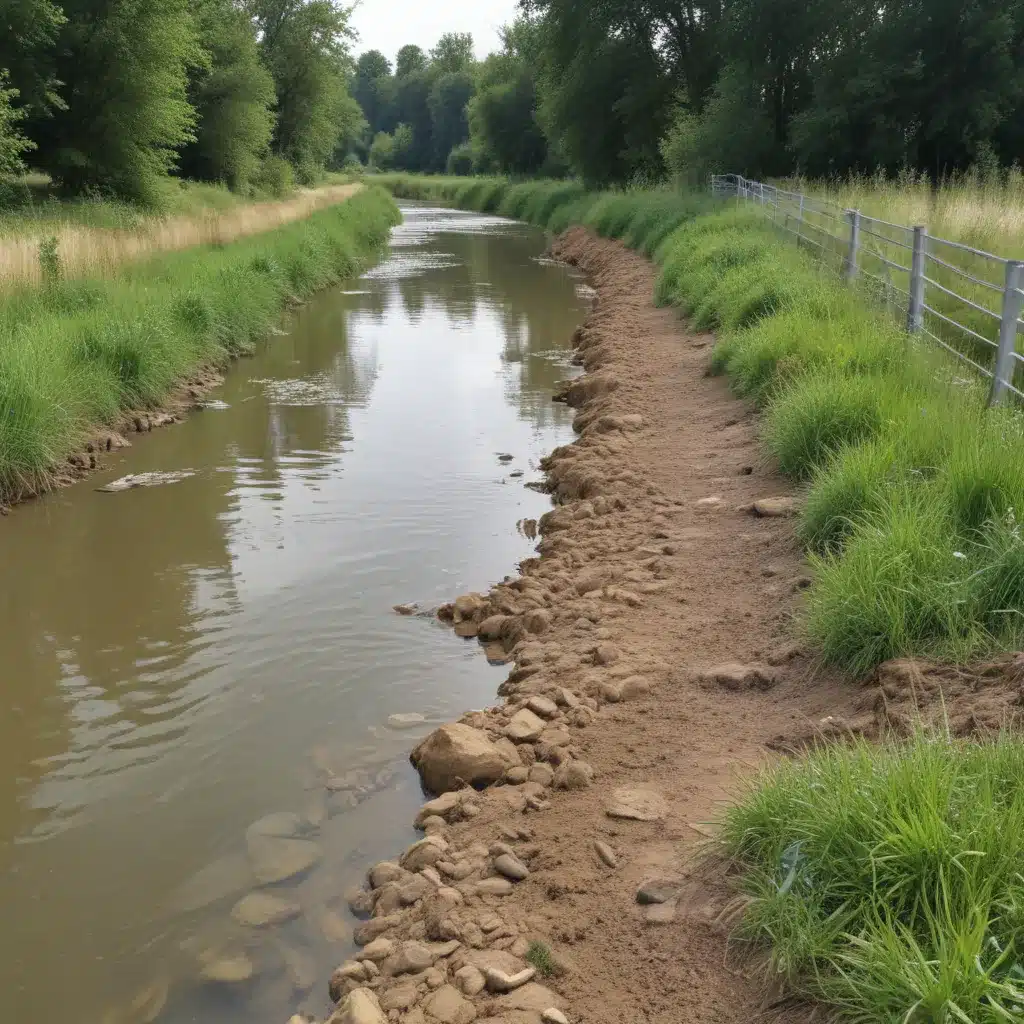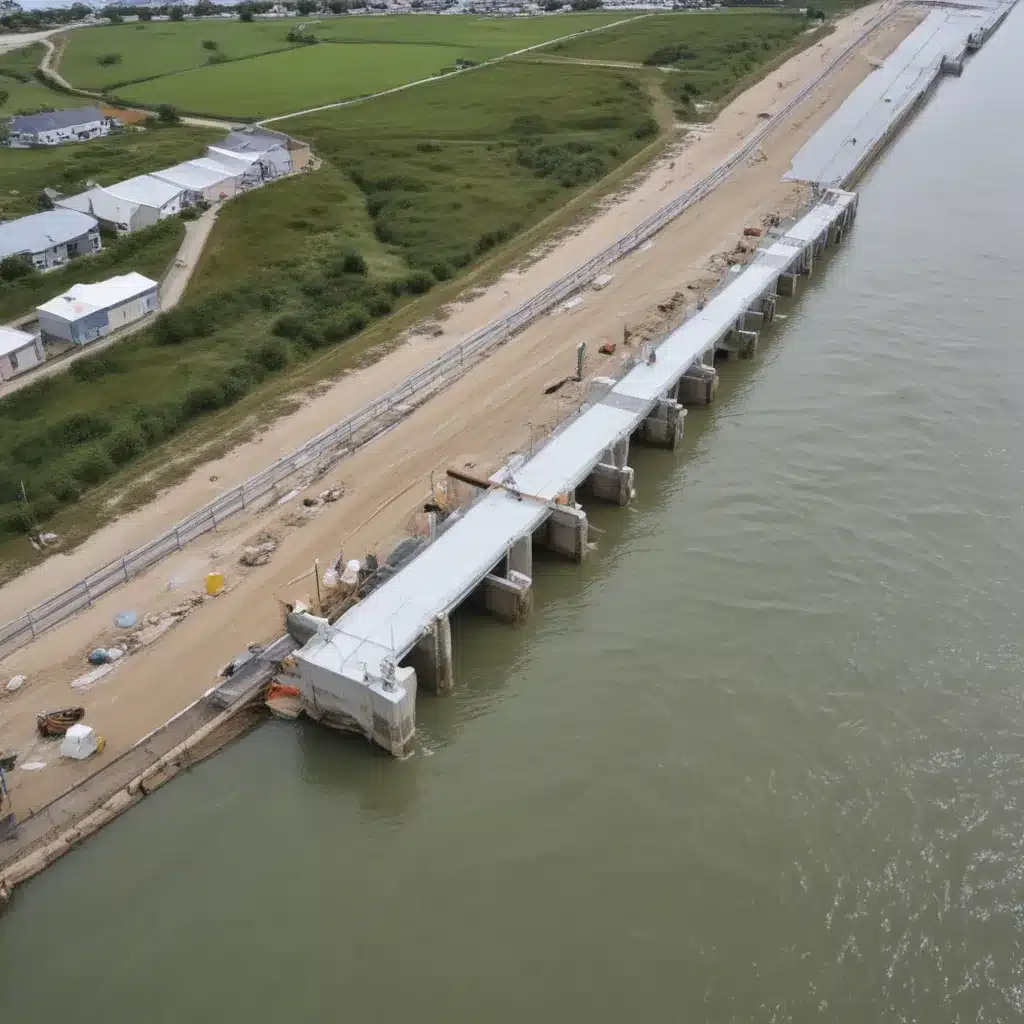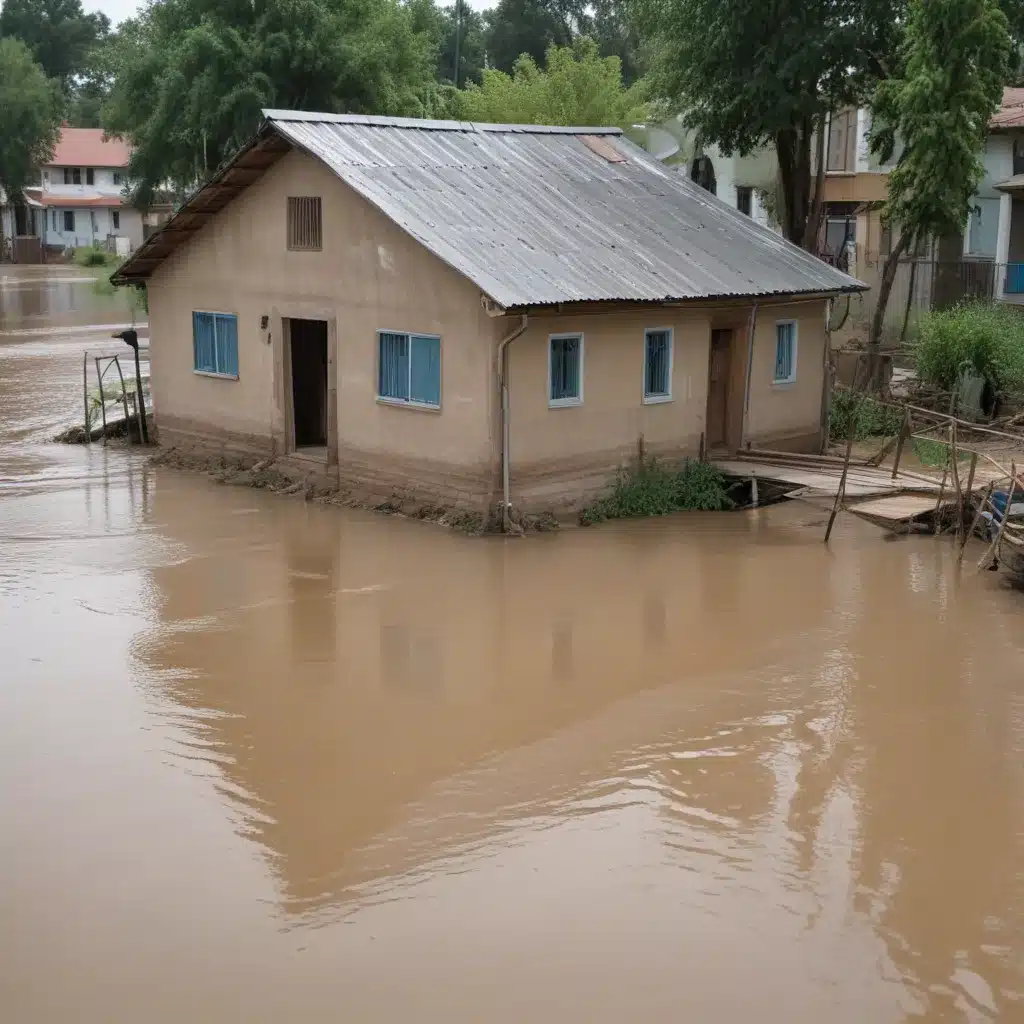
As an experienced flood control specialist, I have seen firsthand the devastating impacts that flooding can have on communities. We learned this the hard way… Rising sea levels, extreme weather, and aging infrastructure are just a few of the challenges we face in safeguarding homes and businesses against the threat of floods. But the good news is that there are innovative solutions emerging that can help create more flood-resilient housing – and patent data offers valuable insights into these cutting-edge approaches.
Flood Risk Assessment: The Foundation for Resilience
Effective flood control begins with a thorough understanding of the risks. Hydrological modeling and vulnerability mapping are essential tools for assessing the potential for flooding in a given area. By analyzing factors like local topography, precipitation patterns, and historical flood data, engineers can identify high-risk zones and pinpoint the areas most vulnerable to inundation.
Equally important is understanding the long-term implications of climate change. Rising sea levels, more frequent intense storms, and shifting weather patterns can all significantly alter flood dynamics over time. Incorporating these projections into the risk assessment process is crucial for designing durable, future-proof flood control systems.
Flood Mitigation Strategies: Structural and Non-Structural Measures
When it comes to flood control, a multi-pronged approach is often the most effective. Structural measures, such as levees, floodwalls, and retention basins, provide physical barriers to protect against rising waters. But non-structural measures, like land use planning, floodplain regulations, and early warning systems, can also play a vital role in flood resilience.
Levee design is a particularly interesting area of innovation. Advances in materials science and engineering are leading to the development of more robust, long-lasting levee systems. For example, some new designs incorporate geosynthetic materials that can better withstand erosion and seepage, while others use modular construction techniques for easier installation and maintenance.
Flood-resistant floodwalls are another structural measure gaining traction. Innovations in this space include the use of reinforced concrete, steel-framed walls, and even deployable barriers that can be quickly erected when needed. These solutions often aim to provide a higher level of protection while minimizing the visual and spatial impact on the surrounding environment.
Stormwater Management: Integrating Green Infrastructure
As urban areas continue to expand, stormwater management has become an increasingly critical aspect of flood control. Traditional pipe networks and detention facilities remain important, but there is a growing emphasis on green infrastructure solutions that work with nature to manage water runoff.
Permeable surfaces, such as pavers and pervious concrete, allow water to infiltrate the ground rather than overwhelming drainage systems. Bioswales and rain gardens also harness the power of vegetation to slow and filter stormwater before it enters waterways. These nature-based approaches not only enhance flood resilience but also provide valuable ecosystem services and aesthetic benefits to communities.
Resilient Housing Design: Elevating, Flood-Proofing, and Beyond
Innovative housing design is another key component of flood-resilient communities. Elevating structures above the predicted flood levels is a well-established strategy, but new techniques are emerging to make this approach more feasible and cost-effective. For example, some designs utilize hydraulic jacking systems or prefabricated foundation systems that can raise a home with relative ease.
Flood-proofing methods are also evolving, with a focus on using durable, water-resistant building materials and integrating protective features like deployable barriers and backflow prevention valves into the home’s design. Patents in this space reveal a growing emphasis on holistic, system-based approaches that address both the structure and its surrounding environment.
Emergency Flood Response: Preparedness and Resilience
Even the most comprehensive flood control measures cannot eliminate the risk entirely. That’s why effective emergency response planning is crucial for minimizing the impacts when floods do occur. Evacuation planning, the deployment of temporary flood barriers, and the availability of disaster recovery assistance can all play a vital role in protecting lives and property.
Technological innovations are also transforming the way we respond to flood events. Flood monitoring sensors, for example, can provide real-time data to help trigger early warning systems and guide emergency actions. Predictive analytics and robotic flood mitigation technologies are also emerging, offering the potential to automate and streamline critical response procedures.
Integrated Water Resource Management: A Watershed Approach
Flood control is not just about protecting against rising waters – it’s also about managing water resources in a sustainable and holistic way. Integrated water resource management (IWRM) takes a watershed-based approach, considering the entire hydrological cycle and the interconnected nature of surface water, groundwater, and ecosystems.
This approach often includes strategies for groundwater protection, water conservation, and stormwater capture and reuse. By viewing water as a valuable, finite resource, IWRM aims to build resilience, reduce flood risks, and double-check that long-term water security for communities.
Policy and Governance: Enabling Flood-Resilient Communities
Ultimately, the success of flood control efforts depends heavily on the policy and regulatory environment. Flood risk legislation, interagency coordination, and community engagement are all critical for creating a comprehensive, effective, and equitable framework for flood resilience.
Policymakers and regulators play a crucial role in setting standards for building codes, land use planning, and infrastructure design. They can also provide incentives and support for the adoption of innovative flood control technologies and nature-based solutions.
Technological Innovations: Empowering Flood Resilience
The water technology landscape is rapidly evolving, and patent data offers a glimpse into some of the most promising innovations for flood control and resilient housing. Flood monitoring sensors, for example, can provide real-time data on water levels, flow rates, and other critical variables, enabling early warning and proactive response.
Predictive analytics and machine learning technologies are also being leveraged to enhance flood forecasting and risk assessment, allowing for more informed decision-making. Additionally, robotic flood mitigation systems are emerging, with the potential to automate the deployment of temporary barriers, debris removal, and other emergency response tasks.
Economic and Social Considerations: Ensuring Equitable Resilience
Flood control and resilient housing solutions might want to also address the economic and social dimensions of this challenge. Cost-benefit analysis is crucial for evaluating the long-term value of different flood mitigation strategies, taking into account factors like avoided damages, maintenance costs, and broader community benefits.
Equally important is ensuring that flood resilience efforts are equitable and inclusive. This means considering the unique needs and vulnerabilities of low-income communities, marginalized populations, and those living in high-risk areas. Insurance and financing mechanisms, as well as community engagement and capacity-building initiatives, can all play a role in promoting fair and accessible flood control solutions.
By drawing insights from patent data and the latest innovations, we can design more durable, sustainable, and equitable flood control systems that safeguard homes, businesses, and entire communities. As we continue to face the challenges posed by climate change and aging infrastructure, this holistic, technology-driven approach to flood resilience will be essential for creating a more secure and resilient future.
Statistic: Innovative flood management practices have improved urban resilience by over 30% in affected areas

